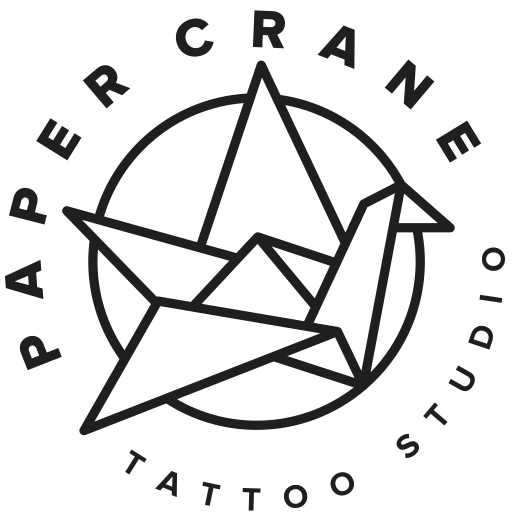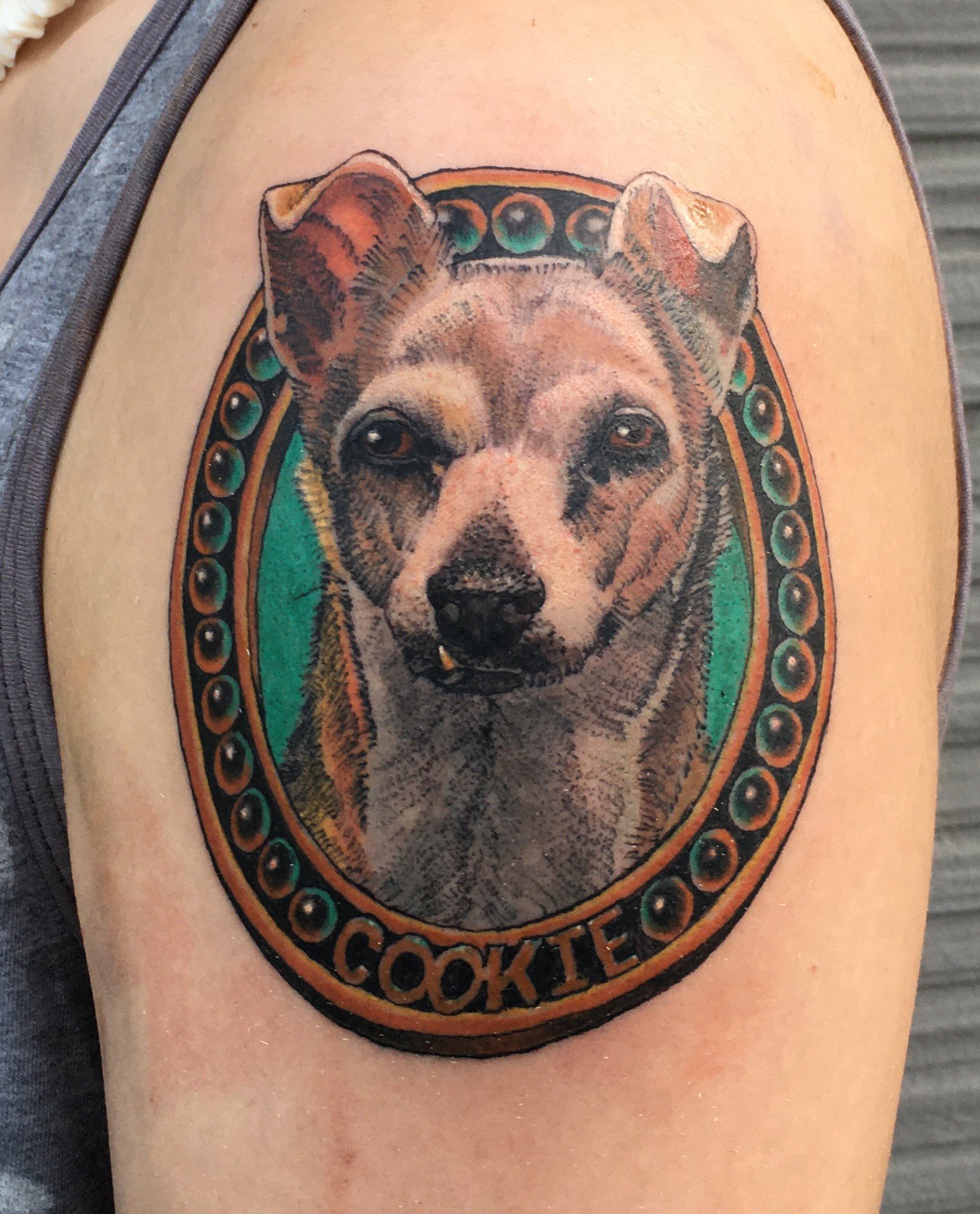Tattoo Design: How We Create Beautiful Art
Tattoo design is an essential part of what artists like Joy Shannon do in Long Beach.
Tattoo design is an essential component of our industry: Although it's often done behind the scenes, our artists spend considerable time drafting, drawing, and perfecting each piece. Even a small tattoo may have been worked on for several hours before it ever becomes a stencil.Our clients primarily see the application side of our industry, but on today's blog we're walking you through some of the basics of tattoo design.
Tattoo Design for Custom Commissions
When you make an appointment with an artist to work on a unique piece, it is a custom commission. That means we create a tattoo design especially for you, without turning to past designs or flash sheets. Our primary focus is custom tattoo work--just check out what we've been working on lately!Our inbox is always open to discuss ideas, but to start on your tattoo design we need to see you at the studio for a consultation. (We can sometimes accommodate virtual consultations for certain tattoos, but that is up to the individual artist.) During a consultation, we accomplish a few central goals:
Discuss ideas. A reference pic is a great jumping off point for your tattoo design, but a face-to-face consultation allows us to tease out what elements of the reference you are actually drawn to. If the idea is still in your head, our experienced artists know just the questions to ask to start drafting a concept. (You’ll be amazed at how readily we can sketch out on paper what’s been floating around your mind!)
Sketch a draft. While the majority of tattoo design is done outside of your consultation, the back-and-forth conversation gives us a chance to start drawing up a sketch with you. We can then use the sketch as a foundation for a first draft, knowing that you’ve walked us through any specifications you might have.
Measure your arm, leg, etc. A hugely important consideration for tattoo design is the space we have to work with. A picture of your arm is great—but to compose something that truly fits your anatomy without being too crowded or too sparse, exact measurements are ideal. This also allows us to know what size you want your tattoo to be: You may want a “medium-sized” tattoo, but we may have very different ideas of what that means in actual inches.
Check your vibe. An in-person meeting can reveal a world of information that an email can’t. By chatting with you, seeing your other tattoos, and getting a feel for your personal style, we can gather details both big and small that can impact the overall feel of your tattoo design.
Digital Tattoo Design
Rarely does a tattoo design spring fully formed from our heads. Instead, we tend to go through several drafts of a design based on the consultation notes, our artistic mood, the input of our peers, the creative studies we are undertaking, and many other factors.Many of our artists like to make a tattoo design 100% digitally. When using a program like ProCreate, we add numerous “layers” to an individual piece, each of which can be removed or further built on. If you ever have watched a time-lapse video of an artist using ProCreate, you’ll understand how much time we spend adding, erasing, adding again, and fine tuning each tattoo design.Digital tools can also allow an artist to use a photograph for a realism tattoo as the basis of their design. But don’t make the mistake of thinking this is easy: An artist still puts time into composing the piece, whether that means making a collage of photographic references or drawing in additional details. You can see an example of the latter in this pet portrait by Suzanne Shifflett, who used the dog’s picture as the basis for her design but created a custom frame.
Tattoo design of a pet portrait by Suzanne Shifflett.
Additionally, an artist must map out the lines of the tattoo onto the photographic references rather than printing out a stencil-version of the picture as is. This requires a careful eye, as the artist is essentially deconstructing the photograph to capture its essential composition.
Hand-Drawn Goodness
Tattoo design by Owen Juarez.
While iPads have truly made their mark on our industry, many artists still prefer to draw out your tattoo design by hand. It’s a similar process in that we create an initial draft and make countless changes until we feel it is ready to present to you for a final inspection. But unlike ProCreate, a sketchbook does not feature an undo button. This means that any edits must be made by hand—which often means starting over entirely.We have artists who prefer to do a mix of hand-drawn and digital designs. Owen Juarez often does color studies by hand, for example, before rendering a digital tattoo design to advertise on Instagram. Everyone’s process is unique—just like each tattoo we create.
Elements of Tattoo Design
Whether we are working with colored pencils or an iPad, there are a few critical elements that help us navigate the design process:
Composition: The way a tattoo design is laid out can make or break the finished piece. Does the design feature just one subject? Is there a focal piece with additional embellishments? Are there multiple focal points? Is the tattoo meant to tell a story? Are the various elements sized correctly with respect to one another? The goal is a design with proportionate elements, an overall sense of balance, and a pleasing aesthetic—and it is a lot more complicated to get there than you might think. Artists spend hours re-sizing, mirroring, moving, and replacing individual elements to get your tattoo design just right.
Size: Are you interested in a full sleeve or a palm-sized tattoo? Depending on your answer, we will give you two vastly different tattoos. Larger pieces allow for more details as well as more freedom when it comes to composition, while smaller pieces typically require simplification or fine linework. No size is inherently better than another, but it is nonetheless an important consideration during tattoo design.
Readability: Readability applies to more than just script tattoos. Whatever the subject, an ideal tattoo design is easy to understand when you look at it: There should be no question of “what am I looking at” when you show off your new piece. We achieve readability through a variety of techniques, such as bold linework or adjustments in the color palette. Size and composition also dictate what we can do with your tattoo to make it readable.
Placement: We create each tattoo to match the unique flow of your body. This means each piece is tailored to your specific anatomy. A full sleeve and a thigh piece are both large tattoos, but they require very different approaches to design. An aquatic-themed sleeve would have a lot of lovely movement and multiple focal points, for example, while a thigh piece would allow for a much larger central subject with a great depth of detail.
Longevity: A tattoo is yours for a lifetime. We want it to look good for years to come, not just the day you leave the studio. We keep the aging process in mind with your tattoo design, which is why we may advise that you size up or simplify certain pieces.
Deposit = Tattoo Design
Because of the nature of the tattoo design process, we require a deposit before we will get to work on your piece. We are happy to sketch out ideas with you during a consultation, but we will not work up a full preview before you commit to an appointment.As artists, we do not charge you for the many hours that we spend working on your design, which means that we don’t get paid unless you get tattooed. That’s why we want you to be totally sure you want a tattoo before we start the design—and your deposit is a sign of good faith that you’ll be coming back to us. (If you back out at the last minute or miss your appointment, please keep in mind that the deposit doesn’t actually cover our design time.)On occasion we get asked if we can create a tattoo design as an art piece. Some of our artists are open to custom commissions, but the price is typically more than that of a deposit.
Making Changes
If you have small edits to make to your design the day of your appointment, we can typically accommodate you. This might include a change in the eye color on a portrait, for example, or adding a small element like a single flower. Major changes may require both a new appointment and a new deposit, with each artist making this decision at their discretion.To avoid any inconvenience and to show respect to the design process, we usually require a consultation for any large-scale custom work. We also ask that you let us know of any changes you have well before your tattoo session. Not every artist provides previews of a tattoo design in advance; but if you are clear in your communication and trust our creative expertise, we do an excellent job of capturing your ideas.
Get Started Today
If you’re ready to start your tattoo design, email us today to start on a consultation!




